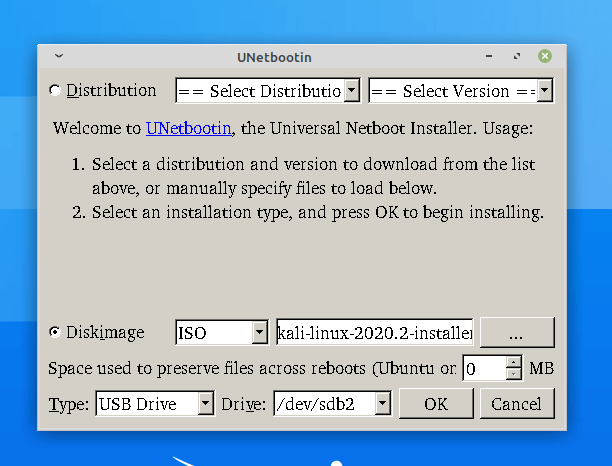
If you’re running under Linux, you can use the dd command, which is pre-installed, or use Etcher.Ī USB thumb drive, 4GB or larger. What You’ll NeedĪ verified copy of the appropriate ISO image of the latest Kali build image for the system you’ll be running it on: see the details on downloading official Kali Linux images. In order to do this, we first need to create a bootable USB drive which has been set up from an ISO image of Kali Linux. It’s potentially persistent - with a bit of extra effort, you can configure your Kali Linux “live” USB drive to have persistent storage, so the data you collect is saved across reboots.It’s customizable - you can roll your own custom Kali Linux ISO image and put it onto a USB drive using the same procedures.


Now, the usb drive is not readable after image writing and the same laptop’s behavior after rebooting. Then, I used Win32 DiskImager 1.0 referred in the documentation. The image is written, I reboot, I select to boot from usb drive, the drive’s led is flashing for 2-3 seconds and then windows 7 installation begins with no sight of kali’s installation. The usb drive is used many times to install Windows 8.1 and 10 to other computers with no problem.


 0 kommentar(er)
0 kommentar(er)
